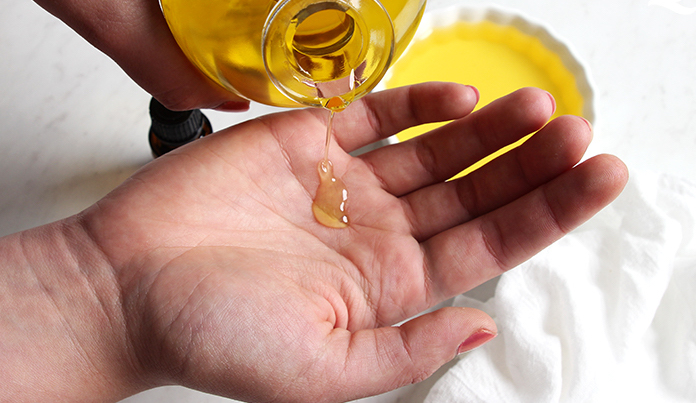- 16 April 2020
- 0 Comments
- Skin Care
How are your hands looking? Is the skin on your fingers feeling a little raw and dry, perhaps a bit itchy too? When you apply lotion to your body, do your hands feel like sandpaper?
Our hands are on the front line of our battle against the COVID-19 pandemic and the virus demands a new standard of personal hygiene. Vigorously lathering up our hands for the duration of a Happy Birthday has become the new norm. Hand sanitiser gel, initially developed for hospitals, is now ubiquitous. The skin on our hands is resilient, but it was never meant to be washed and sanitized this much; stripped of natural oils over and over.
The skin on the back of our hands has sebaceous glands that release sebum, an oil-like combination of triglycerides, squalene and wax esters. This thin, slightly acidic film acts as a barrier to microbes that might penetrate the skin and helps to maintain the integrity of the skin barrier. The palms have no sebaceous glands; however, they do have the biggest concentration of eccrine or sweat glands which also release some oil-like substances.
The skin on our hands is resilient, but it was never meant to be washed and sanitized this much
Soap and water kill the virus by damaging the lipid structure of the organism and washing it away. It’s also efficient at washing away the natural oils that keeps the skin hydrated and protected.
Hand sanitisers work by killing germs on contact, however, only if they are high enough in alcohol – at least 60 percent. Once you apply the alcohol gel, it begins to evaporate, and it’s through this evaporation that germs are killed. If you dry off the sanitiser before it evaporates all the way, you’re actually reducing its effectiveness.
But alcohol is not good for your skin. The alcohols used in hand sanitisers include isopropyl, ethanol, and n-propanol. These are the drying alcohols. They can often irritate the skin, strip away it’s natural oils and acid mantle, dehydrate cells, and increase risk of contact dermatitis. The constantly drying out can lead to more fine lines and wrinkles, cracks, and flakiness.

Moisturising your hands immediately after washing can mitigate the effect, however, most moisturisers work by creating an artificial film over the skin and can have a residual oiliness.
Using pure jojoba oil or a jojoba-based lotion has the advantage of being absorbed into the skin, not only delivering nutrients deep into the dermis, but eliminating any oily touch.
Jojoba oil is unique among all botanical oils, in that it contains wax esters that are similar to those that are naturally produced by our skin glands. It doesn’t just sit over the skin cells, it works to restore the natural mantle. Jojoba is also rich in vitamins, minerals, antioxidants and fatty acids that help to soothe and repair damaged skin.
Better still; a study published in the Pharmacognosy Journal in 2019 titled: Against Antibacterial and Antifungal Activity of Jojoba Wax Liquid (Simmondsia chinensis), concluded that jojoba oil may have a medicinal potential as a natural antibacterial agent.


